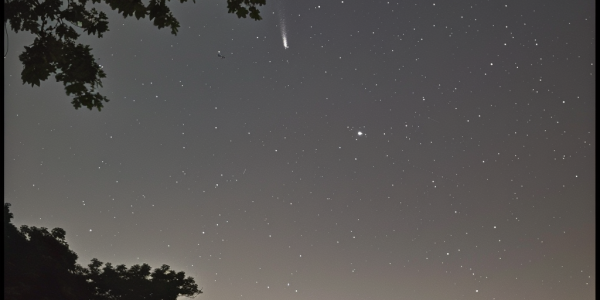Astronomers Double Known Dark Comets, Unraveling Cosmic Mysteries
Astronomers have recently doubled the known count of dark comets, mysterious objects that resemble asteroids yet display comet-like behavior. A groundbreaking study published in the Proceedings of the National Academy of Sciences reveals seven new dark comets, raising questions about their origins and their potential role in delivering life-sustaining materials to Earth. This research sheds light on solar system evolution and the possibility of life beyond our planet.
New Study Reveals Comets’ Role in Earth’s Water Origins
Recent research reveals that comets, particularly Comet 67P/Churyumov-Gerasimenko, played a crucial role in delivering water to Earth billions of years ago. This study highlights the molecular similarities between water on this comet and Earth’s oceans, suggesting that celestial bodies significantly contributed to our planet’s water supply. Understanding these origins not only enhances our knowledge of Earth’s history but also opens new avenues in astrobiology, exploring the potential for life on other planets.
Stunning Photograph Captures Comet C/2023 A3 Over Mount Rainier
A stunning photograph of Comet C/2023 A3 setting behind Mount Rainier, captured by photographer Patrick Vallely, showcases the celestial beauty of the Pacific Northwest. Taken on October 13, 2024, the image highlights the vibrant tail of the comet against the iconic mountain, combining nature’s wonders with the marvels of the universe. This breathtaking scene not only captivates astronomy enthusiasts but also emphasizes the importance of environmental conservation in preserving such natural beauty.
Breakthrough Technique Enhances Early Detection of Hazardous Long-Period Comets
Astronomers have achieved a breakthrough in detecting potentially hazardous long-period comets (LPCs) using a novel technique that analyzes meteoroid trails. This method allows for early identification of ‘planet-killer’ comets, enhancing planetary defense strategies and offering crucial advance warnings. By studying the trails left by these comets, scientists can predict their paths years before they approach Earth, significantly improving our preparedness for potential cosmic threats.
Prepare for the Draconid Meteor Shower: A Celestial Event This October
Get ready for the Draconid meteor shower peaking on October 7-8, 2023. Ideal viewing conditions with a 27% illuminated moon make this a perfect opportunity for stargazers. Expect around 10 meteors per hour, best viewed shortly after sunset. Gather your friends and enjoy this celestial event!
Triple Meteor Shower Spectacle Awaits Stargazers This Week
This summer, stargazers can enjoy a spectacular convergence of three meteor showers: the Southern Delta Aquariids, Alpha Capricornids, and Perseids. Peak visibility for the Southern Delta Aquariids occurs from July 29-30, featuring up to 20 shooting stars per hour. The Alpha Capricornids peak on July 30-31, known for their bright fireballs. The Perseids, running from July 14 to September 1, will peak around August 11-12. With clear skies and minimal light pollution, it’s the perfect time to witness these celestial events.
SpaceX Launches Mysterious Object Resembling a Comet
SpaceX launches spacecraft mistaken for comet or meteor, deploying 20 Starlink satellites into orbit. Enthusiastic stargazers share photos and videos, sparking UFO speculation. View the launch on SpaceX’s website and witness the advancements in space exploration.
Rare Comet to Grace Night Sky for First Time in Nearly 70 Years
Astronomy enthusiasts are in for a treat this summer as Comet 13P/Olbers will be gracing the night sky for the first time in nearly 70 years. Experts suggest the best visibility will be around June 30, making it a rare celestial spectacle not to be missed.
Comet C/2023 A3: The ‘Comet of the Century’ Set to Dazzle Astronomy Enthusiasts
Astronomy enthusiasts are eagerly anticipating the upcoming visit of the ‘comet of the century,’ Comet C/2023 A3. Renowned Canadian astronomer David H. Levy has labeled it as such due to its expected spectacular cometary tail. The comet’s brightness and visibility from the Northern Hemisphere make it a rare astronomical event not to be missed. Track its location with the Sky Tonight app for a seamless viewing experience.
New Theories on Origins of Mars’ Moon Phobos
Recent findings from previously unpublished photos of Mars’ moon Phobos suggest that it could potentially be a captured comet or a fragment of one, challenging existing theories about its origins. The upcoming MMX mission by the Japan Aerospace Exploration Agency aims to provide more insights into Phobos’ mysterious nature, sparking new avenues for scientific inquiry and exploration.










